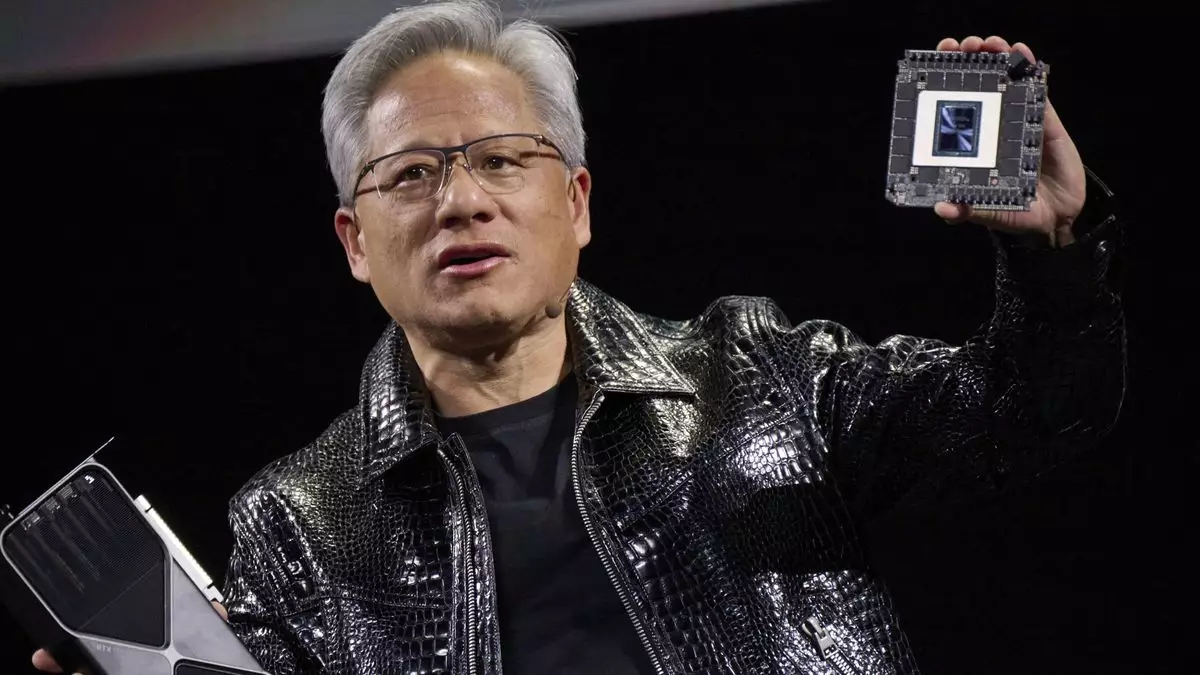Nvidia has undeniably revolutionized the gaming industry with its groundbreaking technologies, especially with features like Deep Learning Super Sampling (DLSS) and frame generation technology. These innovations not only enhance the visual experience for gamers but also have profound implications for the financial performance of Nvidia as a company. A recent exploration into this evolution reveals both the impressive technological advancements and the concerns from consumers regarding the pace of raw performance growth in traditional graphics processing units (GPUs).
Nvidia’s journey towards creating DLSS and its associated frame generation technology was far from instantaneous. A new book titled *The Nvidia Way: Jensen Huang and the Making of a Tech Giant* sheds light on this intricate development process, revealing that it took a staggering six years to refine the AI model crucial for the frame generation feature. As detailed by Bryan Catanzaro, a leading figure in Nvidia Research, the project demanded continuous improvements to achieve the quality needed for gaming applications. The book emphasizes the unusual freedom Catanzaro and his team had—an opportunity that many academic researchers often lack due to time constraints imposed by academic timelines. This comprehensive long-term approach allowed Nvidia to push the boundaries of what’s possible in gaming graphics.
At its core, Nvidia’s frame generation technology functions by inserting AI-rendered frames between the traditional frames generated by the GPU. This unique approach not only enhances frame rates but does so in a way that appears seamless to the gamer. The strategic decision to employ AI as an intermediary showcases Nvidia’s vision of cleverly circumventing hardware limitations. Instead of solely focusing on improving the raw capabilities of their GPUs, they opted to amplify performance through software innovation. This dual approach positions Nvidia as both a hardware leader and a software innovator in the gaming sector.
Financial Dynamics: Maximizing Profit Margins
One of the standout aspects of Nvidia’s development of DLSS and frame generation technology is its financial model. The innovation allows Nvidia to offer enhanced performance without the necessity of creating entirely new, more complex hardware. While traditional GPU development incurs significant costs in design, manufacturing, and distribution, the software-driven nature of DLSS offers a different paradigm. Essentially, Nvidia can spread the developmental costs of sophisticated algorithms across multiple GPU models, improving profit margins without proportionately increasing expenses. This potentially places Nvidia in an advantageous position within the market, allowing them to command higher prices while providing a performance boost to consumers.
The Consumer Perspective: Performance vs. Value
Despite the notable advances in gaming technology, many gamers express discontent over the lack of incremental improvements in raw GPU performance. The recent RTX 50 series, while integrating new technologies like Multi Frame Generation, has not significantly boosted traditional rendering capabilities. Gamers find themselves in a predicament; although the intelligent use of AI enhances their gaming experience, they are also acutely aware of the profit margins Nvidia enjoys as a direct result of these innovations. The expectation from consumers has shifted somewhat; they hope that Nvidia will allocate resources to enhance traditional rendering capabilities on par with their AI endeavors.
As the industry advances, the interplay between AI technologies and traditional hardware capabilities will be pivotal in determining Nvidia’s trajectory. The ongoing challenge will be to balance the development of innovative technologies with improvements in traditional performance metrics. As they navigate through this landscape, Nvidia must ensure that they continue to meet the evolving expectations of consumers who desire not only improved frame rates and resolutions but also a foundational enhancement in the hardware itself. Gamers will be watching closely in anticipation of how Nvidia navigates this crucial balancing act.
Nvidia’s past six years of innovation underscore an impressive commitment to pushing the boundaries of gaming technology. However, the onus lies with them to ensure that this technological fervor translates into meaningful advancements for all gamers, securing their position as leaders both in performance and consumer satisfaction.


Leave a Reply